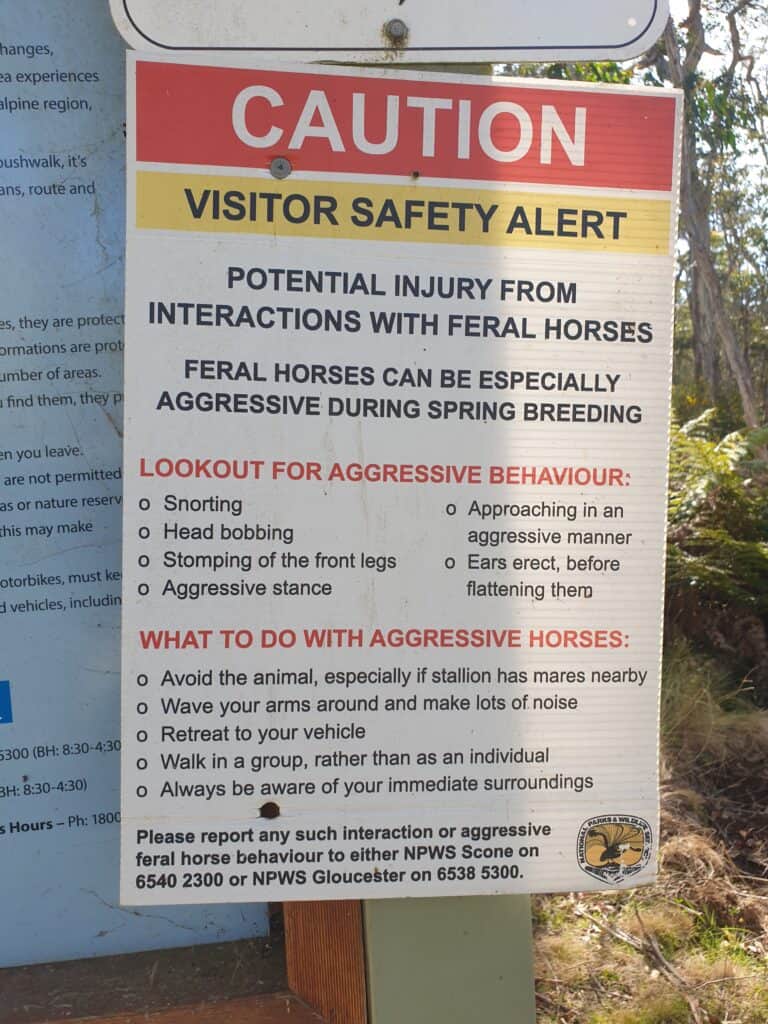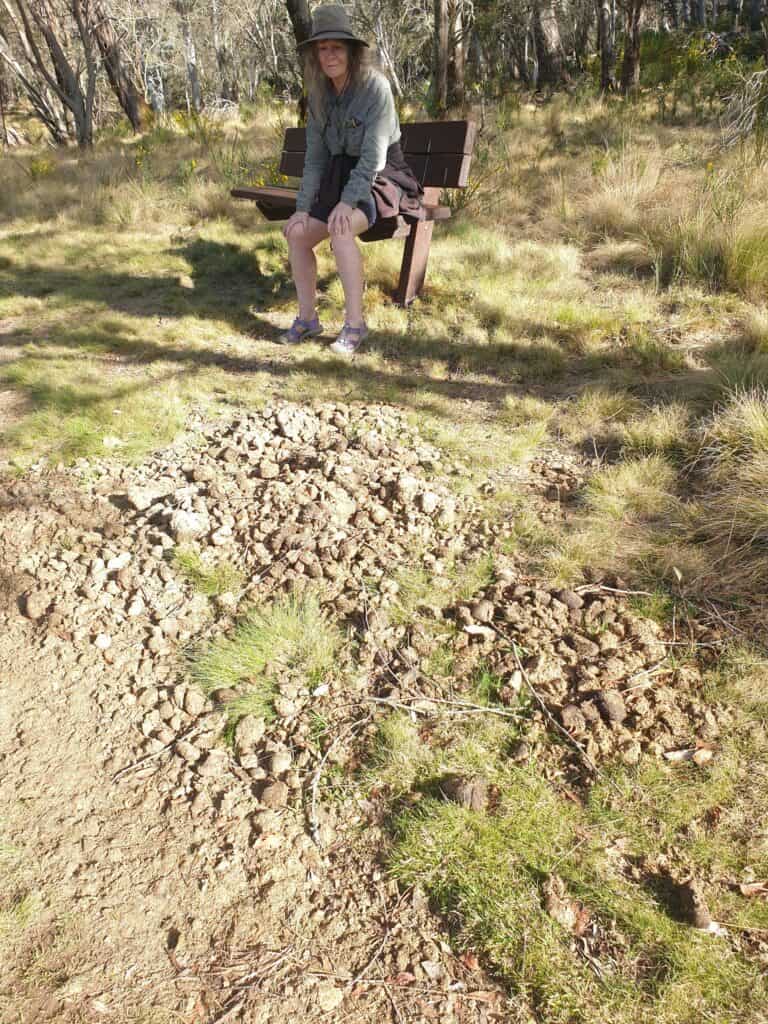Update: This article has been amended to improve accuracy.
On a recent visit to Barrington Tops National Park, Tim Low and Carol Booth experienced the shocking impact of feral horses up close.
In Barrington Tops National Park, visiting Polblue Swamp, we encountered 86 stinking loads of horse dung (stallion piles) on the 3-kilometre trail. This swamp supports an endangered ecological community, and that was where we saw the horses themselves feeding. We also saw dense thickets of English broom smothering all the higher ground. Broom has invaded a staggering 10,000 hectares of the Barrington high country, where it provides ideal shelter for feral pigs, which plough the ground to get at orchid and lily tubers.


A sign beside the Polblue Swamp trail says that pests ‘now threaten the health of this ecosystem’. The sign mentions horses trampling plants and creating erosion, and the broom, pigs and foxes. A second sign explains that ‘Climate change, invasion by weeds and feral animals, together pose a threat to the survival of native plants and animals of the swamp’.
What do foreign tourists, negotiating the horse dung and reading these signs, think of Australians? Instead of removing the horses and broom the NSW National Parks Service puts up signs lamenting what they are doing. The sad truth is that the NSW Parks service lacks a big enough budget to stop the broom expanding and end the siege by feral animals.
Barrington Tops provides a home for 50 rare and threatened species. A national park since 1969, it was awarded World Heritage status in 1986 for its Gondwanan rainforests, part of the largest subtropical rainforest realm in the world, rich in plants that show what Australia was like tens of millions of years ago. It has temperate rainforests as well, dominated by Antarctic beech, and rivers that tumble over rocky cascades. Up on the plateau you can see snow gums and alpine meadows that reach high above the steep valleys.
Yet, Barrington is undergoing an invasion meltdown, the situation of invasive species benefiting each other to deliver worse outcomes. European honeybees pollinate the broom which provides shelter for the pigs and food for the horses and pigs, both of which spread broom seeds in their dung. The broom keeps spreading and pigs and horses keep multiplying. The plateau now has an estimated 600-700 horses, and as well as them we saw lots of snow grass ploughed up by pigs. How is the rare veined double-tailed orchid, found only in Barrington and one other national park, meant to survive? It is either dug up by pigs or smothered by the ever-expanding broom.



